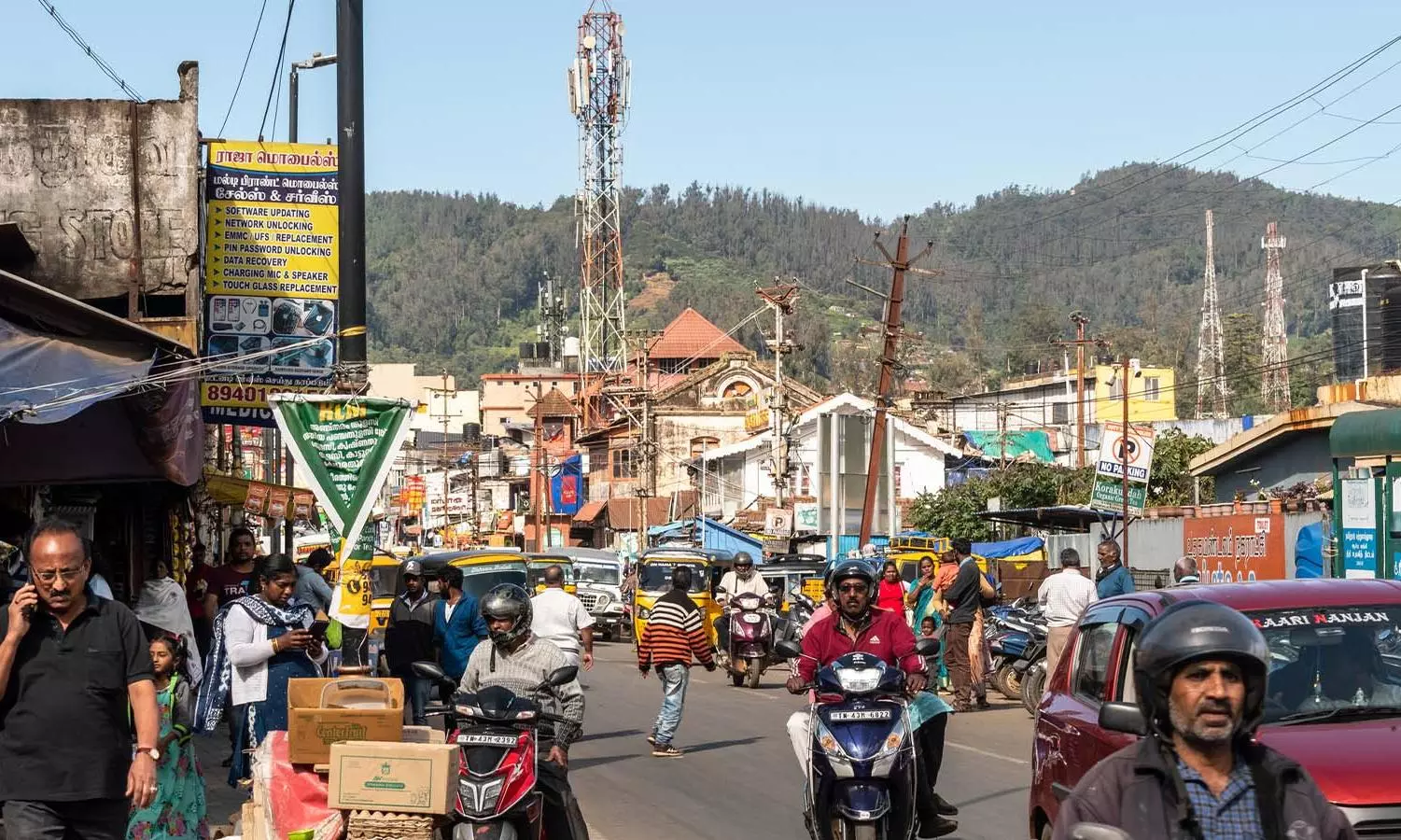
- Home
- India
- World
- Premium
- THE FEDERAL SPECIAL
- Analysis
- States
- Perspective
- Videos
- Sports
- Education
- Entertainment
- Elections
- Features
- Health
- Business
- Series
- In memoriam: Sheikh Mujibur Rahman
- Bishnoi's Men
- NEET TANGLE
- Economy Series
- Earth Day
- Kashmir’s Frozen Turbulence
- India@75
- The legend of Ramjanmabhoomi
- Liberalisation@30
- How to tame a dragon
- Celebrating biodiversity
- Farm Matters
- 50 days of solitude
- Bringing Migrants Home
- Budget 2020
- Jharkhand Votes
- The Federal Investigates
- The Federal Impact
- Vanishing Sand
- Gandhi @ 150
- Andhra Today
- Field report
- Operation Gulmarg
- Pandemic @1 Mn in India
- The Federal Year-End
- The Zero Year
- Science
- Brand studio
- Newsletter
- Elections 2024
- Events
- Home
- IndiaIndia
- World
- Analysis
- StatesStates
- PerspectivePerspective
- VideosVideos
- Sports
- Education
- Entertainment
- ElectionsElections
- Features
- Health
- BusinessBusiness
- Premium
- Loading...
Premium - Events

Carrying capacity must serve as a tool for long-term sustainability rather than a restrictive measure that disproportionately affects vulnerable communities
The intersection of biological sciences and socio-political-economic dynamics has perhaps never been more evident than in the recent Madras High Court order on the “carrying capacity” of two hill stations — Ooty and Kodaikanal — in Tamil Nadu.
Carrying capacity is now widely acknowledged as a critical factor in understanding the relationship between human activity and the natural environment. This concept is particularly crucial when assessing the complex trade-offs associated with extensive anthropogenic impacts on nature.
Tourism, in particular, has emerged as a key sector that not only generates livelihoods and boosts the economy but also poses significant challenges to ecosystems.
Also read: HC imposes tourist vehicle restrictions for Ooty and Kodaikanal
The challenges posed by growing tourism
The expansion of the tourism industry has led to increased demand for land, water, food, and construction materials. It has also contributed to environmental stress through waste disposal, pressure on infrastructure, and social and cultural disruptions in relatively poor host communities.
In some cases, these challenges threaten the long-term sustainability of tourism itself. Overloaded sewage systems, for instance, can lead to untreated wastewater seepage into aquifers, damaging fragile ecosystems. As a result, the concept of carrying capacity is becoming central to discussions on sustainable tourism.
But how should carrying capacity be determined for a given region? What methodology should be employed? Should it be a purely technical assessment, or should local communities have a say? These are key questions that merit discussion. Before delving into these concerns, let’s first examine the High Court’s ruling.
The high court order
On March 13, a division bench comprising Justices N Sathish Kumar and D Bharatha Chakravarthy imposed restrictions on the number of vehicles allowed into Ooty and Kodaikanal.
According to the order, a daily limit of 6,000 vehicles has been set for Ooty on weekdays, which can go up to 8,000 on weekends. Kodaikanal will have a cap of 4,000 vehicles per day on weekdays and 6,000 on weekends. These restrictions will be in force from March to June, with a review scheduled at the end of the period.
The court based its decision on a study conducted by IIT Madras and IISc Bengaluru, which took about nine months to prepare a report on the carrying capacity of these towns. However, publicly available information does not indicate the criteria used to determine the vehicle cap. Was it based on carbon footprint, traffic congestion, or a combination of both? The specifics remain unclear.
Both towns have substantial resident populations — approximately 50,000 in Kodaikanal and 88,000 in Ooty — and function under municipal governance structures. Understanding how carrying capacity was calculated for these regions is essential to ensure that restrictions are both effective and equitable.
Also read: Why traders, tourism firms resent e-pass system in Ooty, Kodaikanal
Same debate in North
A similar debate has been raging in the Indian Himalayan region as well.
The Supreme Court, after being apprised of the matter by a retired IPS officer through a writ petition, asked the Union government to suggest a way forward regarding the carrying capacity of the Indian Himalayan Region (IHR), including its towns and cities. The Centre has filed its affidavit and suggested a few institutions that should be given the task of working out a formula for the carrying capacity of all 13 Himalayan states.
Interestingly, the affidavit misses the role of public representatives and is guided by quantitative data. The petition is still pending and we may soon get some directions for IHR as well.
However, the underlying question for both the south and the north remains the same: what processes should be employed to arrive at the carrying capacity of a region?
Defining carrying capacity
In technical terms, carrying capacity refers to the maximum population an ecosystem can support without degradation. Key factors influencing this include population levels, resource-demand patterns, environmental resilience, and the ecosystem’s ability to absorb human impact.
Ultimately, aggregate demand — calculated as per-capita consumption and emissions multiplied by population size — determines whether an environment can sustain human activity over the long term. In mountain towns, where natural resources are inherently limited, understanding and managing carrying capacity is crucial.
Also read: Kodaikanal hoteliers unhappy as tourists stay away fearing e-pass: Report
However, it is important to approach this issue with caution. As history has shown, there is a proverbial dictum: “The rich will get away with the murders, while the poor will land up paying taxes.” Policies based purely on numerical limits often disproportionately affect marginalized communities.
The risk of such measures reinforcing socio-economic inequalities — where wealthier individuals circumvent restrictions while poorer communities bear the brunt —must not be ignored. The focus should be on sustainable development that integrates environmental concerns with social equity.
A multidimensional approach
A comprehensive approach to carrying capacity should go beyond technical assessments to incorporate social, cultural, economic, and political considerations. Sustainability mapping should analyse human-induced changes and their impact on the environment, infrastructure, and built spaces.
Tourism-related towns face common challenges, including environmental degradation, construction pressures, increased carbon footprints from transportation, and rising waste generation. These factors create additional demands for infrastructure, particularly water supply and waste management systems.
While the High Court’s order is a step in the right direction, the process through which it was reached must be scrutinized. A more participatory and transparent approach is necessary to ensure that carrying capacity assessments serve both environmental and local community interests.
Also read: 90% of Himalayas will face drought if global warming increases by 3 degrees: Study
Key considerations for determining carrying capacity
To ensure a balanced and inclusive approach, the following points should be integrated into carrying capacity assessments for mountain towns:
Focus on sustainable populations: The study should not merely determine carrying capacity for tourists but assess the sustainability of the entire region, including resident populations. Climate action plans should precede carrying capacity evaluations to provide a comprehensive framework.
Holistic environmental assessment: A long-term study should evaluate the sustainability of the entire Nilgiris ecosystem, considering biodiversity, water resources, agriculture, and habitat preservation.
Community involvement: Expert committees must not function as bureaucratic or technocratic bodies detached from local realities. Citizen representation—particularly from panchayats and urban local bodies—must be incorporated. At least one-third of committee members should be drawn from panchayats, municipalities, and other grassroots organizations.
Local government participation: Panchayat Samitis and municipal bodies should be tasked with presenting recommendations based on established population sustainability criteria. This ensures that local perspectives are factored into decision-making.
The way forward
The concept of carrying capacity provides a crucial framework for tourism policy. However, it cannot be used as a pretext for authorities or developers to evade responsibility. While carrying capacity assessments can inform policy decisions, the socio-economic and political dimensions of tourism planning must also be addressed.
A multidimensional approach — one that considers environmental sustainability alongside social equity and economic viability — is essential. By integrating these elements into a structured, participatory planning process, carrying capacity can serve as a tool for long-term sustainability rather than a restrictive measure that disproportionately affects vulnerable communities.
(The Federal seeks to present views and opinions from all sides of the spectrum. The information, ideas or opinions in the articles are of the author and do not necessarily reflect the views of The Federal)


